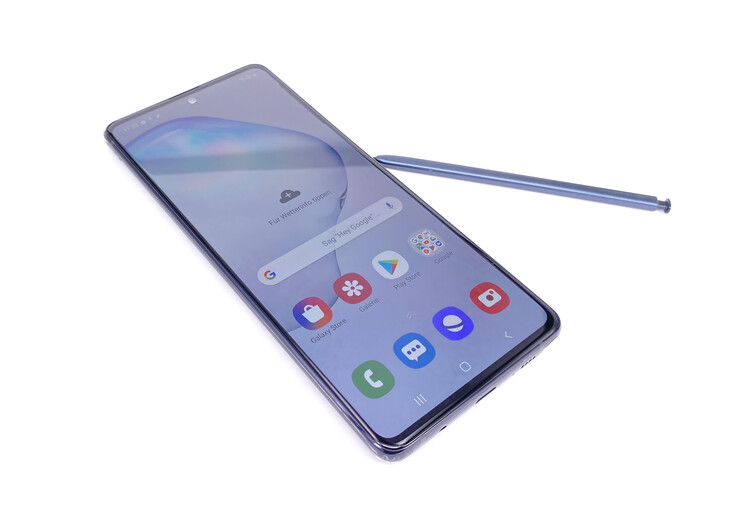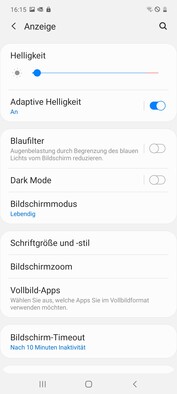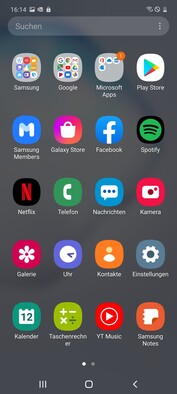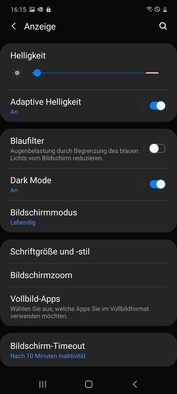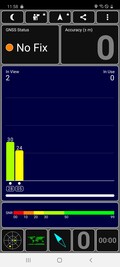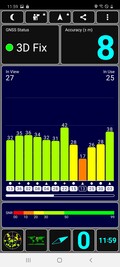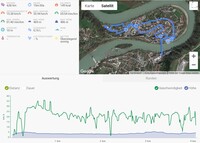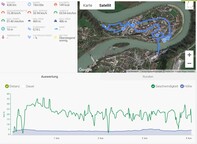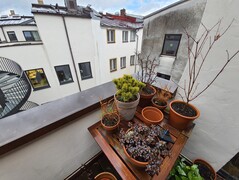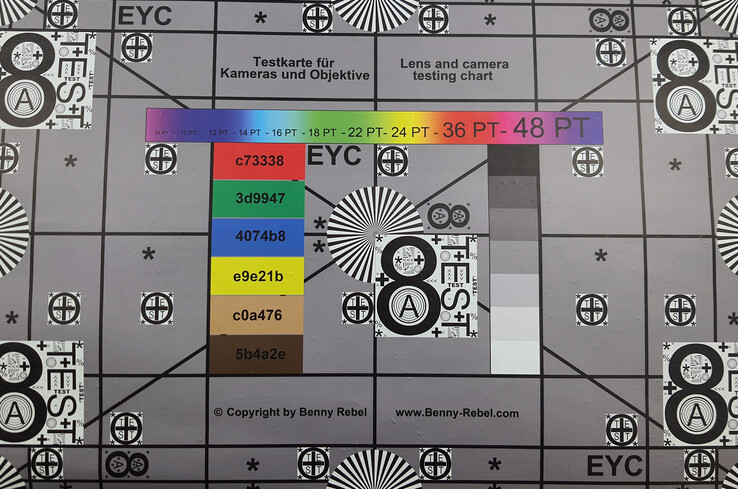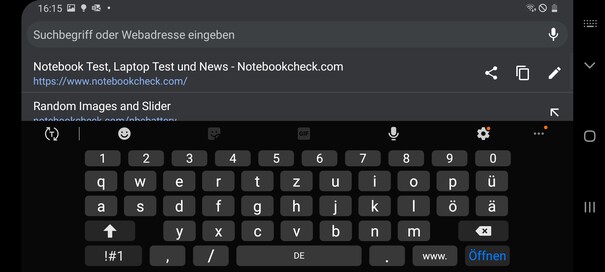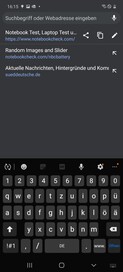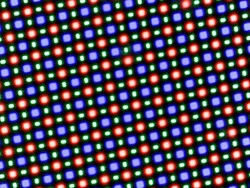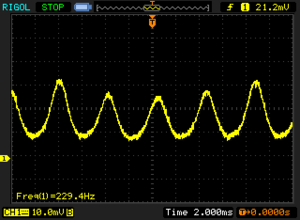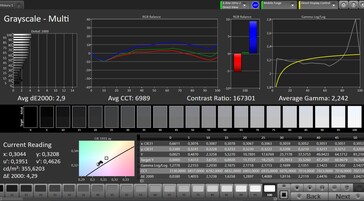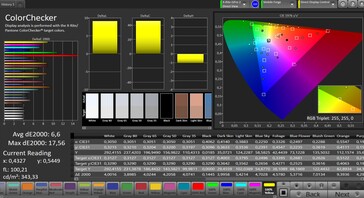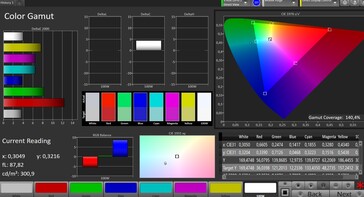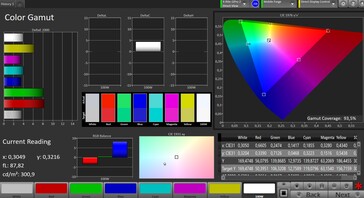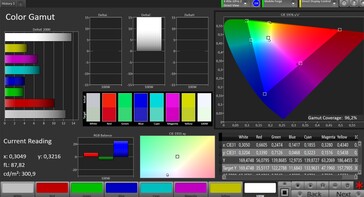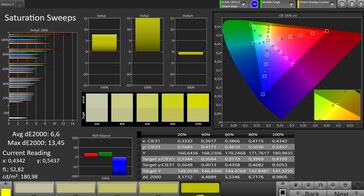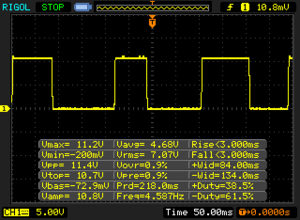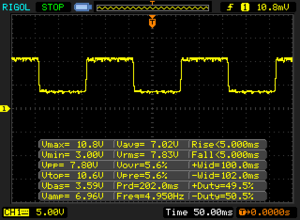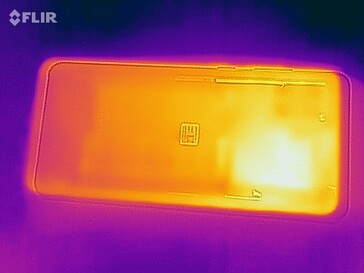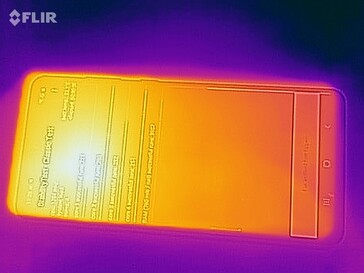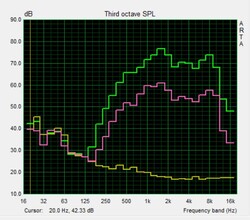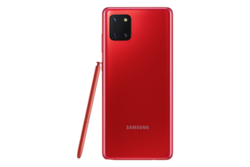Samsung Galaxy Note10 Lite Smartphone Review - Cheaper version of the pen phablet
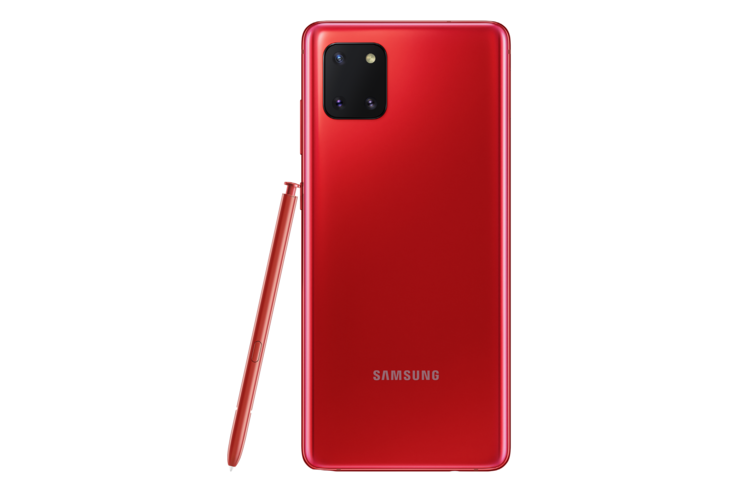
The Galaxy Note series has always been Samsung's highest-end smartphone lineup: Here, only the absolute best components will do, the latest technology is used and the S Pen is a unique feature that allows users to take notes, sketch drawings, highlight passages and much more that cannot be done elegantly with other smartphones. While the Galaxy Note10 and Galaxy Note10 Plus did well in their respective reviews, this year, Samsung is trying to expand its customer base by releasing a cheaper Note smartphone for the first time: At release, the Galaxy Note10 Lite is supposed to be available for 599 Euros (~$650), which is far below the starting price of the Note10 and almost half of the price of the Note10+. That being said, the high-end models have been on the market for half a year already and their prices have dropped.
However, the current generation Note10 Lite is still the cheapest ticket into the world of stylus-enabled Samsung phablets. The Lite model differs in terms of the older SoC, less premium case, slightly lower amount of storage and the lack of high-end standards such as Wi-Fi 6. However, the Note10 Lite comes with a fairly large battery and the camera results almost match those of the Note10.
Since it sounds as though it might be a very interesting alternative overall, we will begin our tests and determine how the device fares in detail.
Comparison Devices
Rating | Date | Model | Weight | Drive | Size | Resolution | Price |
|---|---|---|---|---|---|---|---|
| 82.8 % v7 (old) | 02 / 2020 | Samsung Galaxy Note10 Lite Exynos 9810, Mali-G72 MP18 | 199 g | 128 GB UFS 2.1 Flash | 6.70" | 2400x1080 | |
| 86.3 % v7 (old) | 08 / 2019 | Samsung Galaxy Note10 Exynos 9825, Mali-G76 MP12 | 168 g | 256 GB UFS 3.0 Flash | 6.30" | 2280x1080 | |
| 89 % v7 (old) | 12 / 2019 | Huawei Mate 30 Pro Kirin 990, Mali-G76 MP16 | 198 g | 256 GB UFS 3.0 Flash | 6.53" | 2400x1176 | |
| 86.5 % v7 (old) | 09 / 2019 | Apple iPhone 11 A13 Bionic, A13 Bionic GPU | 194 g | 64 GB SSD | 6.10" | 1792x828 | |
| 83.3 % v7 (old) | 12 / 2019 | Xiaomi Mi Note 10 SD 730G, Adreno 618 | 208 g | 128 GB UFS 2.0 Flash | 6.47" | 2340x1080 | |
| 85.8 % v7 (old) | 10 / 2019 | OnePlus 7T SD 855+, Adreno 640 | 190 g | 128 GB UFS 3.0 Flash | 6.55" | 2400x1080 |
Case - Loss of Quality
The design of the case significantly deviates from those of more expensive Note variants: Instead of an oblong camera, the module on the back is now quadratic, the corners have been rounded-off more and the glass in the front does not warp around the sides. The main difference between the Note10 and its more expensive siblings is the feel: The plastic back becomes immediately apparent and while it does not feel cheap, it does not leave a very high-quality impression either, particularly in light of the ~600 Euros (~$650) the manufacturer charges for the smartphone. Similar to more exclusive Note smartphones, the frame consists of metal.
On top of that, the black color variant looks fairly dull and the somewhat uncommon, red color variant is simply unicolored without light refraction effects or color gradients. At least the silver variant "Aura Glow" is a timely color variation featuring a gradient. Fingerprints accumulate relatively quickly on the back. The smartphone lies in the hand well and the edges are rounded-off smoothly.
On the front, there are very narrow bezels and the camera simply resides in a small hole in the screen instead of being placed in a notch. The Galaxy Note 10 Lite is far bigger than the vanilla Note10 and weighs more as well, the latter of which is likely a result of the higher-capacity battery. Since the manufacturer has not certified its smartphone for water or dust protection, users will have to be careful with their phone.
Features - Note10 Lite with 3.5 mm Jack
Fans of classic headphones will rejoice: After the Note10 and Note10+ did not come with an analogue headphone port, Samsung has reintroduced the traditional 3.5 mm port with the Note10 Lite. On top of that, there is a fast USB Type-C port that supports USB 3.0 speeds. There is also an integrated card reader, which while it occupies one of the SIM slots, is at least available.
With 128 GB of mass storage, the memory configuration is decent and competitive with other smartphones of the same price class. 6 GB of RAM is more than acceptable as well.
There is no notification LED and instead the screen's frame lights up when receiving new messages. There is a Widevine certification, allowing users to watch streaming content in HD resolution.
Software - Galaxy Phone with OneUI 2.0
The Samsung Galaxy Note10 Lite comes with Samsung's OneUI 2.0, which is based on Android 10. At the time of testing, the security patches date back to January 1st 2020, making them relatively up to date. OneUI is modern, easy to use and offers a lot of assistance for people with disabilities. There is, of course, a dark mode that is actually able to reduce the energy consumption thanks to the AMOLED display, while simultaneously reducing eye strain.
A lot of apps have already been preinstalled on the Note10 Lite, which is partially due to the fact that Samsung preinstalls its apps such as its own browser, Samsung Health and even a file manager. Additionally, there are some third party apps as well, which some users may be displeased to hear about. In this case, some of the apps can only be deactivated, meaning they will still take up space on the smartphone but no longer be visible. Thankfully, some of the apps can be fully uninstalled.
Communication and GPS - Mid-Range Wi-Fi and LTE
As our test with the Linksys Nighthawk AX12 illustrates, the Samsung Galaxy Note10 Lite is able to keep up with similarly priced devices in terms of Wi-Fi speed thanks to Wi-Fi 5 support: It is slightly faster than the Xiaomi Mi Note 10 and on par with even the more expensive Galaxy Note10. While the speeds cannot compete with real high-end devices, they are more than satisfactory for this price class. Web pages load quickly when close to the router and scrolling incurs only a small delay. At a distance of 10 meters from the router and through three walls, the signal is only slightly weaker and web pages still load quickly.
While the Galaxy Note10 Lite may not be a world phone due to only supporting 15 LTE bands, it covers enough frequencies for users to be able to connect to their local LTE networks in most countries. In an urban area, the signal strength was good during a short walk and even in a street canyon the signal strength was only halved. Indoors, the Galaxy Note10 Lite also performs well in terms of the reception.
The GPS cannot locate us indoors and is dependent on Google's location service, which does a better job of determining our position by taking the location of Wi-Fi networks and the signal strength of nearby cell towers into account. Outdoors, the signal is found very quickly and the accuracy swiftly increases to be within 8 meters. While this is not an outstanding result, it is still decent. The integrated compass did not always face our actual direction in our tests.
In our real-world test, a bike ride with the Galaxy Note10 Lite and the Garmin Edge 520 for comparison purposes, the smartphone does a very good job of locating us overall: At worst, it only marginally deviates from the traversed route and records both the turn and crossing the bridge precisely, making it a good choice for navigation purposes.
Telephony and Call Quality - Somewhat Dull
Samsung uses its own telephony app that is fairly intuitive and provides similar features as Google's standard app. Provided the carrier supports it calls can be made over LTE and Wi-Fi with the smartphone.
We are relatively pleased with the call quality of the Galaxy smartphone: While the earpiece does not sound bad, it is not exactly clear either and the volume could be slightly higher. Our conversational partner describes the sound of our voice as clearly audible, even when speaking quietly. Hands-free mode with the integrated speaker sounds somewhat dull, although our voice is captured well here, too.
Cameras - Good Setup
At first glance, the camera setups of the Galaxy Note10 Lite and the Galaxy Note10 look identical: three camera lenses on the back, a main camera, a telephoto and a wide-angle lens paired with a single cam in the front that is able to capture 4K videos.
However, Samsung has cut a few corners, which becomes apparent upon closer inspection: Unlike the more expensive model, the main camera comes without a variable aperture and the maximum aperture size is smaller as well, which likely results in a decreased potential light yield in difficult situations. The telephoto lens is slightly less light-sensitive as well, whereas the wide-angle lens remains unchanged. With 32 megapixels, the front camera's resolution is even higher than on the Galaxy Note10.
Pictures taken with the main camera turn out well when capturing objects: There are many details and fine structures are portrayed fairly well. In any case, the colors appear less vivid than in pictures taken with the iPhone. While the landscape scene exhibits an odd lack of sharpness in the bottom left area, the smartphone matches the expectations for its device class and we also like the image brightening. In a difficult low-light situation featuring candle light, the smartphone strikes a good balance between depicting the flame and brightening the image.
Although the wide-angle lens causes a fisheye effect, which warps the edges of the image, the pictures look good and capture a lot of details. We feel similarly about the telephoto lens, which can be used to enhance objects. Zooming in and out between the lenses is also possible via hybrid zoom in steps of tenths, which means there are 5 (0.5x to 1x) and 10 (1x to 2x) steps between the optics, respectively. While the optics can at least be switched between while recording videos, a more continuous zoom is not available.
Speaking of videos: They can be recorded at 4K with 60 FPS at most, although in this case, the recording cannot be stabilized. Additionally, this limits recordings to the main optics. When recording 4K videos with 30 FPS, users can choose between all three lenses. We were pleased with the video quality, changing lighting conditions are adapted to quickly and the recordings appear very detailed.
In our laboratory, we can control the light intensity even better and the camera achieves good results in very good lighting conditions: Color transitions look clean and details are relatively sharp. The differences compared to better cameras become apparent when capturing black text in front of a red background, where the borders of the text become blurry and the edges exhibit a lack of sharpness as well.
The subject remains discernible even in a very low-light scenario, although it does become fairly blurry and pixelated.
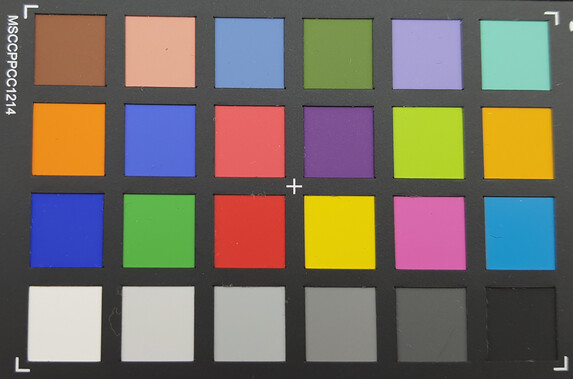
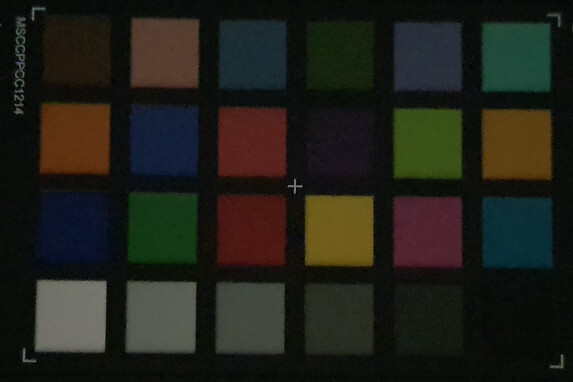
Accessories and Warranty - Fair Prices
Aside from the quick charger and a USB cable with two Type-C ends, the smartphone also comes with a wired headset and a SIM tool as well as of course the S Pen, which resides inside of the device. On its homepage, Samsung sells a few covers such as a plain, transparent silicone cover for just below 11 Euros (~$12) and the slightly more premium S-View cover with a window for just below 40 Euros (~$43). A replacement pen can be purchased for around 30 Euros (~$32) and an additional charger for about 35 Euros (~$38).
Samsung grants its customers a warranty period of two years for the smartphone.
Input Devices & Handling - S Pen as the Defining Feature
Similar to its more expensive siblings, the Galaxy Note smartphone's defining feature is the option to use the S Pen for inputs. The S Pen looks identical to the ones included with the other smartphones and can also be elegantly tucked into the case, where it is charged while not in use. However, Samsung has cut back a few of the features from the Galaxy Note10 generation on the Lite model: Gestures for example, which could be used to navigate a couple of features on the phone, are missing.
When taking the pen out of the case, a symbol appears on the screen that contains a menu for launching various applications for the S Pen. Interacting with the touchscreen is a very precise and reliable experience both when using a finger and the stylus.
The fingerprint sensor is hidden beneath the display and while we did like its precision and speed when unlocking the phone, it is still not on par with very good traditional fingerprint sensors in either category. Furthermore, Samsung had to cheat a little when it comes to the fast unlocking mode, since it slightly reduces the requirements for a fingerprint match in order to facilitate a faster unlock. While not ideal, it may be a worthwhile trade-off for the comfort it provides. Those who prefer higher security over speed can activate more scans.
The Samsung Galaxy Note10 Lite also comes with facial recognition, which can be used to unlock the phone swiftly and fairly reliably.
Display - Note10 Lite with AMOLED Screen
The Samsung Galaxy Note10 Lite cannot quite match its more expensive siblings in terms of brightness: Although an average of 536.2 cd/m² is not a bad result, some of the other devices in our comparison offer a far higher brightness level. Thanks to the AMOLED display, users will not have to worry about the representation of black: It is very deep and rich, since individual pixels can be deactivated entirely and a backlight is not used. Similar to other Galaxy Note10 models, the native resolution of the display is Full HD, which is good in light of the price category.
| |||||||||||||||||||||||||
Brightness Distribution: 91 %
Center on Battery: 510 cd/m²
Contrast: ∞:1 (Black: 0 cd/m²)
ΔE ColorChecker Calman: 6.6 | ∀{0.5-29.43 Ø4.77}
ΔE Greyscale Calman: 2.9 | ∀{0.09-98 Ø5}
140.4% sRGB (Calman 2D)
Gamma: 2.242
CCT: 6989 K
| Samsung Galaxy Note10 Lite AMOLED, 2400x1080, 6.7" | Samsung Galaxy Note10 Dynamic AMOLED, 2280x1080, 6.3" | Huawei Mate 30 Pro OLED, 2400x1176, 6.5" | Apple iPhone 11 IPS, 1792x828, 6.1" | Xiaomi Mi Note 10 AMOLED, 2340x1080, 6.5" | OnePlus 7T AMOLED, 2400x1080, 6.6" | |
|---|---|---|---|---|---|---|
| Screen | 35% | 29% | 49% | 15% | 29% | |
| Brightness middle (cd/m²) | 510 | 764 50% | 592 16% | 679 33% | 625 23% | 693 36% |
| Brightness (cd/m²) | 536 | 757 41% | 605 13% | 671 25% | 607 13% | 703 31% |
| Brightness Distribution (%) | 91 | 91 0% | 96 5% | 93 2% | 89 -2% | 96 5% |
| Black Level * (cd/m²) | 0.68 | |||||
| Colorchecker dE 2000 * | 6.6 | 2.66 60% | 2.5 62% | 0.8 88% | 4.38 34% | 3.42 48% |
| Colorchecker dE 2000 max. * | 17.56 | 5.65 68% | 5.5 69% | 2.4 86% | 6.83 61% | 6.12 65% |
| Greyscale dE 2000 * | 2.9 | 3.2 -10% | 2.6 10% | 1.1 62% | 4.1 -41% | 3.3 -14% |
| Gamma | 2.242 98% | 2.073 106% | 2.16 102% | 2.24 98% | 2.251 98% | 2.265 97% |
| CCT | 6989 93% | 6326 103% | 6173 105% | 6610 98% | 7251 90% | 6799 96% |
| Contrast (:1) | 999 |
* ... smaller is better
Screen Flickering / PWM (Pulse-Width Modulation)
| Screen flickering / PWM detected | 229.4 Hz | ||
The display backlight flickers at 229.4 Hz (worst case, e.g., utilizing PWM) . The frequency of 229.4 Hz is relatively low, so sensitive users will likely notice flickering and experience eyestrain at the stated brightness setting and below. In comparison: 53 % of all tested devices do not use PWM to dim the display. If PWM was detected, an average of 8088 (minimum: 5 - maximum: 343500) Hz was measured. | |||
In our tests with the CalMAN software and our spectrophotometer, the deviations in terms of the grayscale are very small and colors are also represented fairly well, although red deviates significantly from the ideal value, which raises the average color deviation of all colors considerably. That said, the color accuracy of the Note10 Lite is still decent and it would be hard to differentiate between a reference color and a color displayed on the screen with the naked eye, the display does not represent colors as precisely as other devices in our comparison, however.
PWM flickering is an unfortunate reality of AMOLED displays and the display always flickers when not at maximum brightness in order to reduce the perceived brightness for the human eye. Due to this, sensitive users should take a closer look at the smartphone and test the display before making a potential purchase.
Display Response Times
| ↔ Response Time Black to White | ||
|---|---|---|
| 6 ms ... rise ↗ and fall ↘ combined | ↗ 3 ms rise | |
| ↘ 3 ms fall | ||
| The screen shows very fast response rates in our tests and should be very well suited for fast-paced gaming. In comparison, all tested devices range from 0.1 (minimum) to 240 (maximum) ms. » 17 % of all devices are better. This means that the measured response time is better than the average of all tested devices (20.2 ms). | ||
| ↔ Response Time 50% Grey to 80% Grey | ||
| 10 ms ... rise ↗ and fall ↘ combined | ↗ 5 ms rise | |
| ↘ 5 ms fall | ||
| The screen shows good response rates in our tests, but may be too slow for competitive gamers. In comparison, all tested devices range from 0.165 (minimum) to 636 (maximum) ms. » 22 % of all devices are better. This means that the measured response time is better than the average of all tested devices (31.6 ms). | ||
Thanks to the underlying AMOLED technology, the viewing angles are close to perfect. The brightness outdoors is slightly lower compared to other higher-end smartphones, making reflections in bright environments slightly more annoying. However, the screen still remains very readable and not terribly straining for the eyes even under these conditions.
Performance - Older SoC
The Samsung Exynos 9810 has primarily been popularized by the Samsung Galaxy Note 9 and the Galaxy S9, both of which were part of Samsung's high-end 2018 devices. Since two years, during which the performance of SoCs has steadily increased, have passed by now, it should be no surprise that the Galaxy Note10 Lite carrying the same SoC is unable to keep up with current flagship devices. Even within its price class, the OnePlus 7T for example outperforms the cheap Note phone, whereas the Xiaomi Mi Note 10 is even slower.
That said, the SoC is fast in terms of practical performance, stuttering is almost a non-issue and the performance is sufficient for the vast majority of apps. The performance advantages of current high-end smartphones only really come into play when playing the most demanding games or executing very demanding applications with real-time components such as controlling drones. With an older SoC, some users may be concerned about the possibility of future Android versions not being supported for very long: However, Samsung has promised at least two large operating system updates and monthly security patches for the Note10 Lite.
| PCMark for Android | |
| Work performance score (sort by value) | |
| Samsung Galaxy Note10 Lite | |
| Samsung Galaxy Note10 | |
| Huawei Mate 30 Pro | |
| Xiaomi Mi Note 10 | |
| OnePlus 7T | |
| Average Samsung Exynos 9810 (5736 - 6571, n=4) | |
| Work 2.0 performance score (sort by value) | |
| Samsung Galaxy Note10 Lite | |
| Samsung Galaxy Note10 | |
| Huawei Mate 30 Pro | |
| Xiaomi Mi Note 10 | |
| OnePlus 7T | |
| Average Samsung Exynos 9810 (5184 - 5851, n=4) | |
Web-browsing on the smartphone is not quite as fluid of an experience as on current top-end devices either and is even slightly slower than on other smartphones in its own price class. While this shows that Samsung has some catching up to do, the Note10 Lite does not feel sluggish during daily use and is at least able to keep up with upper mid-range devices.
| Jetstream 2 - 2.0 Total Score | |
| Average of class Smartphone (23.8 - 387, n=148, last 2 years) | |
| Apple iPhone 11 (Safari Mobile 13.0) | |
| Huawei Mate 30 Pro (Chrome 78) | |
| OnePlus 7T (Chrome 76) | |
| Samsung Galaxy Note10 (Chrome 76) | |
| Xiaomi Mi Note 10 (Chrome 78) | |
| Average Samsung Exynos 9810 (n=1) | |
| Samsung Galaxy Note10 Lite (Chrome 80) | |
| JetStream 1.1 - Total Score | |
| Apple iPhone 11 (Safari Mobile 13.0) | |
| OnePlus 7T (Chrome 76) | |
| Huawei Mate 30 Pro (Chrome 78) | |
| Samsung Galaxy Note10 (Chrome 76) | |
| Xiaomi Mi Note 10 (Chrome 78) | |
| Average Samsung Exynos 9810 (62.9 - 69.6, n=4) | |
| Samsung Galaxy Note10 Lite (Chrome 80) | |
| Speedometer 2.0 - Result 2.0 | |
| Average of class Smartphone (15.2 - 643, n=121, last 2 years) | |
| Apple iPhone 11 (Safari Mobile 13.0) | |
| Huawei Mate 30 Pro (Chrome 78) | |
| OnePlus 7T (Chome 76) | |
| Samsung Galaxy Note10 (Chome 76) | |
| Xiaomi Mi Note 10 (Chrome 78) | |
| Samsung Galaxy Note10 Lite (Chome 80) | |
| Average Samsung Exynos 9810 (n=1) | |
| WebXPRT 3 - Overall | |
| Apple iPhone 11 (Safari Mobile 13.0) | |
| Average of class Smartphone (38 - 380, n=31, last 2 years) | |
| Huawei Mate 30 Pro (Chrome 78) | |
| OnePlus 7T (Chrome 76) | |
| Samsung Galaxy Note10 (Chrome 76) | |
| Xiaomi Mi Note 10 (Chrome 78) | |
| Samsung Galaxy Note10 Lite (Chrome 80) | |
| Average Samsung Exynos 9810 (63 - 72, n=4) | |
| Octane V2 - Total Score | |
| Average of class Smartphone (2228 - 121337, n=195, last 2 years) | |
| Apple iPhone 11 (Safari Mobile 13.0) | |
| OnePlus 7T (Chrome 76) | |
| Huawei Mate 30 Pro (Chrome 78) | |
| Samsung Galaxy Note10 (Chrome 76) | |
| Xiaomi Mi Note 10 (Chrome 78) | |
| Average Samsung Exynos 9810 (12933 - 15233, n=4) | |
| Samsung Galaxy Note10 Lite (Chrome 80) | |
| Mozilla Kraken 1.1 - Total | |
| Samsung Galaxy Note10 Lite (Chrome 80) | |
| Xiaomi Mi Note 10 (Chrome 78) | |
| Average Samsung Exynos 9810 (2060 - 3189, n=4) | |
| Samsung Galaxy Note10 (Chrome 76) | |
| OnePlus 7T (Chrome 76) | |
| Huawei Mate 30 Pro (Chrome 78) | |
| Average of class Smartphone (257 - 28190, n=154, last 2 years) | |
| Apple iPhone 11 (Safari Mobile 13.0) | |
* ... smaller is better
Although our reference card Toshiba Exceria Pro M501 is not read from as quickly as on other devices, it is good to see an integrated card reader being available in the first place. Relative to the smartphone's price category, the UFS 2.1 storage does not offer outstanding access times unlike the OnePlus 7T, which has raised the bar with its UFS 3.0 storage. At least the Note10 Lite's storage is faster than the memory of the Xiaomi Mi Note 10. Overall, while you cannot really complain, the storage access times are also unlikely to impress anyone.
| Samsung Galaxy Note10 Lite | Samsung Galaxy Note10 | Huawei Mate 30 Pro | Xiaomi Mi Note 10 | OnePlus 7T | Average 128 GB UFS 2.1 Flash | Average of class Smartphone | |
|---|---|---|---|---|---|---|---|
| AndroBench 3-5 | 95% | 71% | -12% | 11% | 11% | 332% | |
| Sequential Read 256KB (MB/s) | 777 | 1478 90% | 1781 129% | 480.5 -38% | 1406 81% | 761 ? -2% | 2243 ? 189% |
| Sequential Write 256KB (MB/s) | 190.8 | 590 209% | 401.8 111% | 243.6 28% | 218.4 14% | 296 ? 55% | 1865 ? 877% |
| Random Read 4KB (MB/s) | 132 | 194.2 47% | 226.4 72% | 106.2 -20% | 170.1 29% | 154 ? 17% | 296 ? 124% |
| Random Write 4KB (MB/s) | 142 | 191.9 35% | 259.2 83% | 118.9 -16% | 29.9 -79% | 130.4 ? -8% | 339 ? 139% |
| Sequential Read 256KB SDCard (MB/s) | 73.5 ? | 82.5 ? 12% | 76 ? 3% | ||||
| Sequential Write 256KB SDCard (MB/s) | 59.8 ? | 69.2 ? 16% | 59.6 ? 0% |
Gaming - 60 FPS is Possible
Games can be played at 60 FPS on the Samsung Galaxy Note10 Lite, provided the game itself supports it. While the SoC may not be suitable for the most demanding games, it is sufficient for the vast majority of games on the Play Store. While there are small frame rate dips while playing Asphalt 9, they are not noticeable during the game.
Although the touchscreen and gyroscope controls work well in games, the pen is not supported by most apps, which is a shame for menus with small elements in particular.
Samsung's One UI includes a gaming overlay called Game Booster, which studies the user's behavior and allows for disabling the navigation buttons and other disruptive interruptions while gaming.
Emissions - Throttling, Unfortunately
Temperature
With a peak temperature of 39.4 °C (102.94 °F) under load, the Samsung smartphone does not reach very high temperatures under load, although as our GFXBench battery test shows, the SoC cannot maintain its high performance indefinitely: After a while, the performance level drops by a fairly significant 40%. As a result, users should not expect to be able to access the full performance of the smartphone in demanding scenarios.
There was no noticeable heat development during idle.
(+) The maximum temperature on the upper side is 39.4 °C / 103 F, compared to the average of 35.2 °C / 95 F, ranging from 21.9 to 247 °C for the class Smartphone.
(+) The bottom heats up to a maximum of 39.1 °C / 102 F, compared to the average of 34 °C / 93 F
(+) In idle usage, the average temperature for the upper side is 29.1 °C / 84 F, compared to the device average of 32.9 °C / 91 F.
Speaker
Unlike with the Galaxy Note10, there is no stereo sound on the Lite model and instead there is only a mono speaker on the bottom edge. The sound quality cannot quite match more expensive Note models due to higher frequencies being much more present and distorting. In our opinion, the audio experience is superior at lower volume levels, although there, it lacks bass and warmth. While the maximum volume is even higher than on the Galaxy Note10 according to our measurements, we would have preferred a better sound quality.
Since the 3.5 mm jack can be used to connect traditional headsets and headphones, it is likely going to be a highly sought-after feature for some buyers. External audio devices can otherwise be connected to the Galaxy Note10 Lite via Bluetooth 5.0 and both options work without any issues.
Samsung Galaxy Note10 Lite audio analysis
(+) | speakers can play relatively loud (83.6 dB)
Bass 100 - 315 Hz
(-) | nearly no bass - on average 70.2% lower than median
(+) | bass is linear (0% delta to prev. frequency)
Mids 400 - 2000 Hz
(-) | nearly no mids - on average 70.2% lower than median
(+) | mids are linear (0% delta to prev. frequency)
Highs 2 - 16 kHz
(-) | nearly no highs - on average 70.2% lower than median
(+) | highs are linear (0% delta to prev. frequency)
Overall 100 - 16.000 Hz
(-) | overall sound is not linear (130.3% difference to median)
Compared to same class
» 98% of all tested devices in this class were better, 2% similar, 0% worse
» The best had a delta of 11%, average was 35%, worst was 134%
Compared to all devices tested
» 99% of all tested devices were better, 1% similar, 0% worse
» The best had a delta of 4%, average was 24%, worst was 134%
Samsung Galaxy Note10 audio analysis
(±) | speaker loudness is average but good (80.9 dB)
Bass 100 - 315 Hz
(-) | nearly no bass - on average 22.1% lower than median
(±) | linearity of bass is average (9.9% delta to prev. frequency)
Mids 400 - 2000 Hz
(+) | balanced mids - only 3.9% away from median
(+) | mids are linear (5.2% delta to prev. frequency)
Highs 2 - 16 kHz
(+) | balanced highs - only 3.7% away from median
(±) | linearity of highs is average (8.3% delta to prev. frequency)
Overall 100 - 16.000 Hz
(±) | linearity of overall sound is average (20.6% difference to median)
Compared to same class
» 35% of all tested devices in this class were better, 9% similar, 56% worse
» The best had a delta of 11%, average was 35%, worst was 134%
Compared to all devices tested
» 54% of all tested devices were better, 8% similar, 38% worse
» The best had a delta of 4%, average was 24%, worst was 134%
Battery Life - Large Battery, Good Runtimes
Energy Consumption
The energy consumption is slightly worse than that of the Galaxy Note10, and particularly under load, the smartphone draws quite a lot of power even compared to other devices. While idling, the energy consumption is nothing out of the ordinary.
| Off / Standby | |
| Idle | |
| Load |
|
Key:
min: | |
| Samsung Galaxy Note10 Lite 4500 mAh | Samsung Galaxy Note10 3500 mAh | Huawei Mate 30 Pro 4500 mAh | Apple iPhone 11 3110 mAh | Xiaomi Mi Note 10 5260 mAh | OnePlus 7T 3800 mAh | Average Samsung Exynos 9810 | Average of class Smartphone | |
|---|---|---|---|---|---|---|---|---|
| Power Consumption | 5% | 18% | -2% | 12% | 4% | 19% | 7% | |
| Idle Minimum * (Watt) | 0.9 | 0.9 -0% | 0.87 3% | 0.56 38% | 0.7 22% | 0.9 -0% | 0.783 ? 13% | 0.843 ? 6% |
| Idle Average * (Watt) | 1.6 | 1.2 25% | 1.75 -9% | 2.99 -87% | 1.8 -13% | 1.4 12% | 1.315 ? 18% | 1.436 ? 10% |
| Idle Maximum * (Watt) | 1.9 | 2 -5% | 1.83 4% | 3.02 -59% | 2.2 -16% | 2.9 -53% | 1.903 ? -0% | 1.62 ? 15% |
| Load Average * (Watt) | 8.4 | 7.7 8% | 3.85 54% | 4.17 50% | 5.2 38% | 4.7 44% | 5.76 ? 31% | 7.04 ? 16% |
| Load Maximum * (Watt) | 10.3 | 10.5 -2% | 6.64 36% | 5.44 47% | 7.5 27% | 8.3 19% | 7.06 ? 31% | 11.3 ? -10% |
* ... smaller is better
Battery Life
Samsung tries to give its cheaper Note smartphone a boost by equipping it with a 4,500 mAh battery. The much larger battery compared to the Note10 is a success, since it allows the Note10 Lite to last 27% longer on average than its more expensive sibling. Browsing the web for 15 hours? Not a problem with the Galaxy Note10 Lite! As a result, recharging the device only every other two or three days should suffice for normal smartphone use.
If necessary, the quick charger can supply more than 20 watts, at which point it indeed fully recharges the phone in a very short time: A lot more than 1:30 hours is rarely needed. However, the charging management is hard to work with when the original charger is not being used: Even when there is enough power to charge the phone, the recharging speed is throttled significantly, causing a full charge cycle to take up to close to 8 hours.
While other smartphones from the same price class such as the Xiaomi Mi Note 10 can last even longer, the Samsung Galaxy Note10 Lite is definitely competitive.
| Samsung Galaxy Note10 Lite 4500 mAh | Samsung Galaxy Note10 3500 mAh | Huawei Mate 30 Pro 4500 mAh | Apple iPhone 11 3110 mAh | Xiaomi Mi Note 10 5260 mAh | OnePlus 7T 3800 mAh | |
|---|---|---|---|---|---|---|
| Battery runtime | -27% | -7% | 6% | 24% | -5% | |
| Reader / Idle (h) | 36.8 | 23.2 -37% | 36.2 -2% | 46.1 25% | 35.6 -3% | 33.4 -9% |
| H.264 (h) | 17.9 | 13.4 -25% | 18.3 2% | 19.1 7% | 23.7 32% | 16.1 -10% |
| WiFi v1.3 (h) | 15.1 | 9.7 -36% | 13.7 -9% | 14.4 -5% | 18.8 25% | 14.9 -1% |
| Load (h) | 4.6 | 4.1 -11% | 3.7 -20% | 4.5 -2% | 6.5 41% | 4.7 2% |
Pros
Cons
Verdict - Cheap Entry with Trade-offs
The Samsung Galaxy Note10 Lite is a cheaper version of Samsung's flagship smartphones. This becomes immediately apparent from the rather simplistic plastic case, mid-range SoC, basic mono speaker, the slightly lower display luminosity and the lower count of supported LTE frequencies.
However, the Samsung Galaxy Note10 Lite does not have to be seen as a slimmed-down version. Depending on a user's preferences, the Note10 Lite may even come with a few advantages with the longer battery life being the one that is most likely to be relevant. Those who prefer analogue audio have access to a 3.5 mm audio jack and fans of storage expansion can use a microSD card to increase the storage space. The Galaxy Note10 lacks both of these options.
The Samsung Galaxy Note10 is a relatively cheap point of entry into the Galaxy Note device family and receives a recommendation from us.
Furthermore, the image quality of the cameras is good, the GPS is accurate, the software is modern and the excellent stylus is almost unique in that it opens up a whole range of new possibilities with only a few features missing compared to the other Note10 smartphones.
We recommend the Samsung Galaxy Note10 Lite to those who have always wanted a cheaper Galaxy Note smartphone. Although it may be worth taking a look at the Galaxy Note 9, which while it is a few months older, can be purchased at a similar price as the Note10 Lite.
Samsung Galaxy Note10 Lite
- 09/03/2022 v7 (old)
Florian Schmitt




